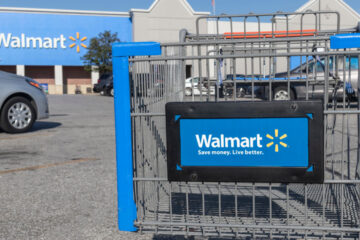Global investors are dumping U.S. stocks following last week’s historic swings in the S&P 500, tied to the uncertainty surrounding President Donald Trump’s tariff strategy, as analysts debate whether equity markets have tested their lows for the year or if more losses are likely to come as the economy shrinks and corporate profit growth slows.
Bank of America’s monthly survey of global fund managers, published Tuesday, showed the biggest two-month decline in U.S. stock allocation on record, with the lowest overall level of exposure in two years.
Investors were also convinced the President Trump’s tariff policies would slow both global and U.S. economic growth, with around 42% of those surveyed indicating domestic recession risks over the next twelve months.
The larger question, however, as to whether U.S. stocks, which hit a one-year low of 4,835.04 points on the S&P 500 during the worst of last week’s historic selloff, are poised for a rebound or a risk to further declines remains unsettled.
Any “big upside” for U.S. stocks needs “big tariff easing, big Fed rate cuts, and/or economic data resilience”, Bank of America’s Michael Hartnett noted.
President Donald Trump’s tariff gambit has prompted one of the biggest pullbacks in U.S. stock allocation from global investors on record, according to data from Bank of America.
BRENDAN SMIALOWSKI/Getty Images
At present, the S&P 500 is up around 8.5% from last Tuesday’s closing low, powered in part by a series of retreats from President Trump’s tariff gambit, but capped by the increasingly aggressive trade war actions between Washington and Beijing.
More stock pain ahead?
That could leave markets vulnerable to another pullback, argues JPMorgan’s head of global and European equity strategy Mislav Matejka, who thinks a broader rally may not emerge until the second half of the year.
“Even in light of the latest 90-day tariffs pause for non-retaliating countries and the electronics exemptions, we struggle to see equities trading sustainably above the pre- ‘Liberation Day’ levels,” he said. “Simply, some of the damage to corporate and consumer confidence will stick given these wild gyrations.”
The S&P 500’s current valuation, at around 19x earnings, remains higher than in previous market slumps, suggesting levels that are “seen at the start of a downturn,
rather than at the end.”
Related: Bond, dollar rout spark concerns of safe-haven status of U.S. assets
“We believe one needs to see tariffs newsflow settle, one needs to see potential departures from the administration to materialize, as well as for the Fed to capitulate, but that might not happen before labour market falters,” he added.
Jeffrey Buchbinder and Adam Turnquist, LPL Financial’s technical strategists, are a modestly more optimistic, arguing in a note published Monday that there’s a “decent chance the bottom is in after the S&P 500 traded down to 4,835 last Monday.”
“Several things still give us pause, including the intensifying trade war with China, uncertainty about where non-China tariffs will land, and the possibility that stocks will retest recent lows,” the pair wrote. “Further, valuations are not compelling given higher interest rates and lower earnings because of the tariffs.”
Earnings in sharp focus
Earnings thus far have been mixed, with the top Wall Street banks posting better-than-expected results largely off the back of trading book profits, but also warnings the consumer and business investment uncertainty, tied to tariff risks, will likely blunt U.S growth prospects over the coming quarters.
LSEG data suggests collective first quarter profits for the S&P 500 will rise by around 8% from last year to around $507 billion, but more focus is likely to be centered on near-term forecasts amid the tariff uncertainty.
Second quarter earnings growth estimates are currently pegged at 9.2%, according to LSEG data, with full-year gains forecast at around 9%.
Related: Wall Street overhauls S&P 500 price targets as tariff selloff accelerates
Bank of America’s fund manager survey, in fact, notes that “investors have turned negative on US profit outlook .. net 28% say that the outlook for US profits is unfavorable, the most since November of 2007.”
“The substance of earnings season over the next few weeks is likely to matter much less than usual,” said Jason Price, chief of investment strategy & research at Glenmede. “Q1 results are expected to be largely chalked up as “old news” given the dramatic changes to trade policy within the last few weeks.”
Tariff uncertainty lingers
“This earnings season may also prove to be particularly telling for investors, as shifting trade policy may prompt companies to suspend forward guidance, potentially revealing their tariff sensitivity and echoing the behavior seen during the beginning of COVID,” added Pride.
BlackRock’s Jean Boivin, who heads the asset manager’s Investment Institute, notes that while tariffs are likely to stoke inflation pressures, raise the risk of recession and delay corporate investment, the administration’s 90-day pause on reciprocal levies “suggest it’s taking some account of financial risks and costs as well as a country’s willingness to engage.”
“It [also] shows there are factors that could put a check on the administration’s maximal tariff stance,” he added. “As a result, late last week we extended our tactical horizon back to six to 12 months to dial up risk. Yet we still think tariffs can hurt growth and lift inflation, and major uncertainty remains.”
More Economic Analysis:
Wall Street overhauls S&P 500 price targets as tariff selloff acceleratesInflation would like a word, pleaseStocks could bounce, but big bank earnings hold the cards


